
Icy Reception
The Icehouse: Melbourne’s coolest new venue.
Text:/ Mandy Jones
One of Melbourne’s newest recreational venues is now officially its coolest …literally. At temperatures between -3° and -8°C, the two ice rinks at the National Ice Sports Centre at the Docklands have added ice sports to Melbourne’s enviable reputation as the sporting capital of Australia.
Known as the Icehouse, the $58 million facility was developed by ING Real Estate Developments Australia it is situated in the heart of the Waterfront City precinct between Costco’s flagship Australian store and the troubled Southern Star Observation Wheel, currently in the process of being reconstructed.
As the largest winter sport facility in the southern hemisphere, the Icehouse features two full-sized ice rinks suitable for ice hockey, curling, short-track speed skating, figure skating and recreational skating. The complex also includes a gymnasium and sports medicine clinic as well as a range of retail and function spaces, including the compulsory bar, cafe and merchandise shop required at any contemporary recreation facility. After a 14-month construction period, the 7200 square metre Icehouse opened in February this year. Designed by Cox Architects, the exterior of the finished building resembles a glacial melt line and is a subtle hint at the frosty conditions inside.
Video specialist Massteknik was appointed as the audiovisual contractors to the project by construction company Hansen Yuncken and its client ING Real Estate. Tim Mitchell, Business Development Manager for Massteknik came on board as project manager for the audiovisual design and installation and has seen the project through from concept to completion.
(Main Image) The exterior of the Icehouse is designed by Cox Architects to resemble the melt line in a glacier.
Photographer: Mark German
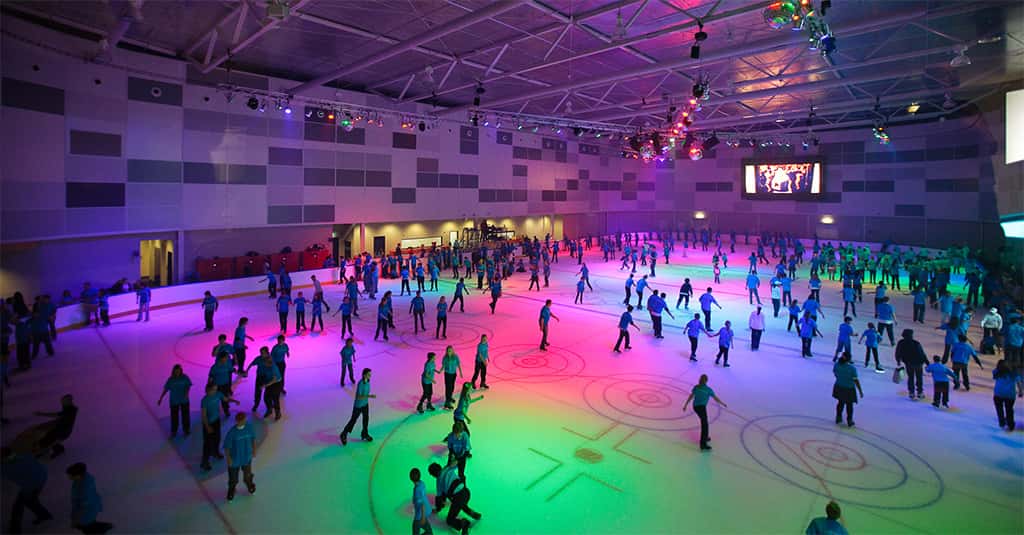
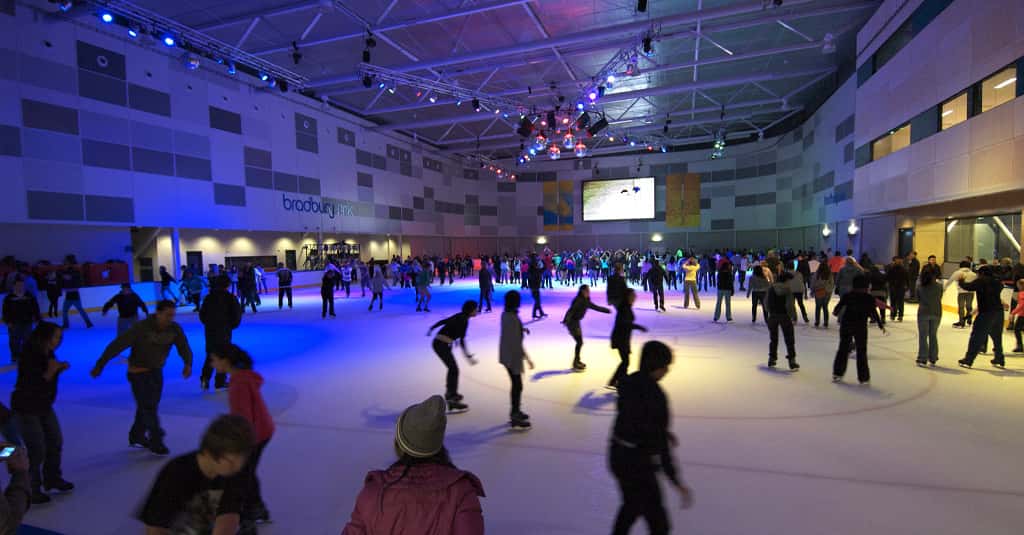
PUCK-ER RINK
Rink 1 is called the Henke Rink in honour of the Chairman of the Olympic Winter Institute and one of the founders of ice sports in Australia, Geoff Henke. As the main competition rink, it is standard Olympic size (60m x 30m), has stadium seating for 1000 spectators, dressing rooms for the athletes, and complies with rigorous International Ice Hockey Federation standards. As a venue it is stark and functional. The wall decor is made up of monochrome blocks of varying greyscale and the rink is illuminated by high-bay discharge floodlights. It’s clear that this rink is all about business, and the glass barriers around the dasher boards are a clue to just how serious business on the ice hockey rink gets.
Massteknik partnered with Jands to provide an audio system for Rink 1 that is typical of similar competition rinks.
“We worked with John Dignum and Glenn Helmot from Jands on the audio throughout the venue. In Rink 1 there are 10x JBL AM6215 cabinets, five directed at the seating and five directed at the ice for the competitors, all powered by Crown CTS-2000 amps,” explained Tim.
Rink 1 features a 4m x 3.2m, 240- x 192-pixel LED screen, and while it’s fully video enabled, its core purpose is to work as a scoreboard and timing display for the ice hockey games played beneath it. Fully outdoor-rated, the screen is made up of Lumidiem C16 Panels with a 16mm pixel pitch with a brightness of 5000cd/m2. Screen control is by a Vizomo video processor and content is a combination of Dise digital signage software and TecViz, a dedicated sport scoring system, both controlled via a Crestron-based touch screen.
“TecViz is a tried and true system that was developed by Massteknik in Sweden and is currently used in around a dozen ice hockey venues throughout Sweden and Europe. As scoring systems go, it’s fully optioned and includes countdown and count-up clocks, customised text for team names, penalty alarms, score horns, the works. The only downside was the manual was in Swedish so it had to be translated into English,” Tim remarked.
Inside the scoring booth, the Crestron touch screen control system enables scorekeepers and officials to operate the scoring system and make PA announcements via a Shure ULX series radio microphone system. Massteknik also installed ice hockey match essentials such as green and red beacon lights that are triggered by IR remotes held by the goal umpires to indicate goals and lock-outs when the game clock is stopped.
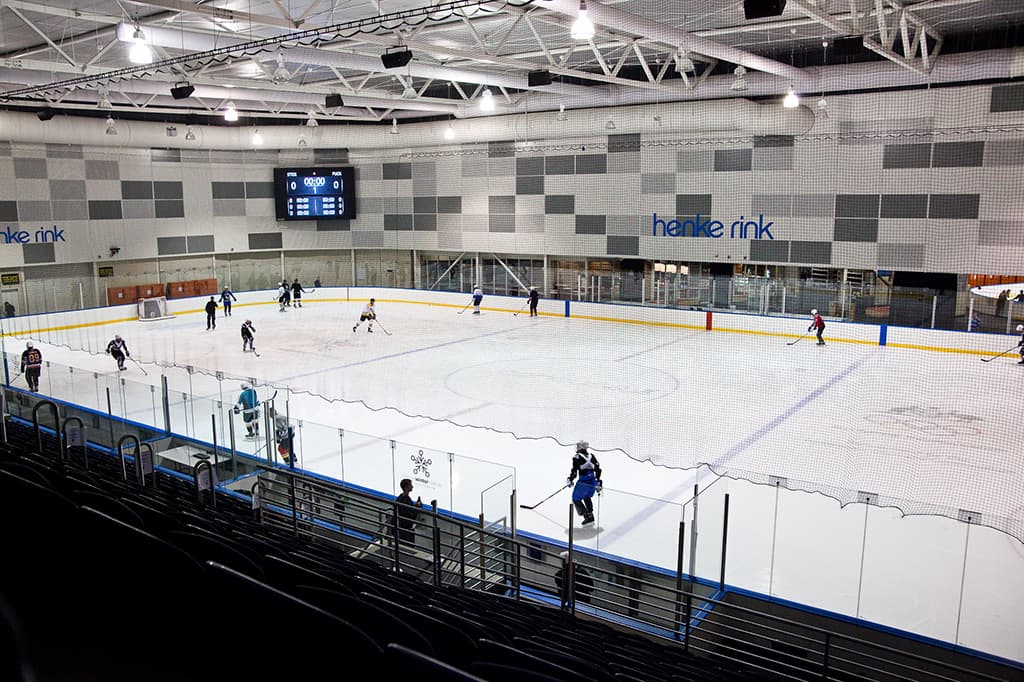
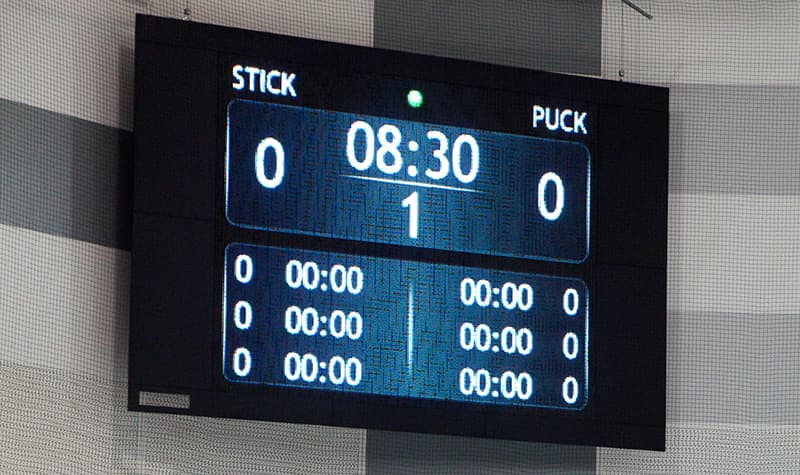
PARTY ON
The Icehouse’s second rink is named the Bradbury Rink after Stephen Bradbury, the short-track speed skater who famously won Australia’s first Winter Olympic Gold medal at the 2002 Salt Lake City games by being the last man standing when the entire course fell over. Fittingly, it is on this rink that you are most likely to see the best spills as this rink is used for public recreational skating, as well as figure skating, speed skating and curling.
As an Olympic-grade training venue, the Icehouse provides in-house professional trainers for the figure skaters and speed skaters, with training sessions running from 6am daily. To accommodate the demand for the two public skating sessions each day as well as the late night sessions on Friday and Saturday nights, there are 2300 pairs of rental skates on hand.
While this rink doesn’t have the stadium seating and scoring booth that Rink 1 has, it makes up for it by having a slightly bigger C16 Lumidiem LED screen, this one measuring 8m x 4.4m with 480 x 264 pixels. Its position at one end of the rink makes it ideal for showing music clips. Tim expects the LED screens in both rinks to have long lives because of the constant temperature.
“This venue is extremely climate controlled – it is absolutely temperature stable and has to be, because we are effectively working with huge blocks of ice that contain around 54,000 litres of water. From a climate point of view, in such a temperature-stable and humidity-controlled environment, these electronics will happily run and run, and that’s the added benefit of using outdoor rated screens (IP64 from the front and IP57 from the back),” Tim explained.
The PA for Rink 2 comprises eight JBL AM6215 cabinets, again powered by Crown CTS-2000 amplifiers, with all the speakers rigged from the overhead lighting truss and directed to give full coverage of the ice as there isn’t an audience to accommodate. Local control of music is from a DJ riser next to the rink with a simple Tascam playback unit which enables figure skaters to bring their own CD or iPod to train to.
Throughout the facility a Nightlife hard drive music subscription system is used to deliver an endless array of music video clips. These are not only fed to the two large LED screens, but also a number of IPTV networked screens in the retail and function spaces. On Rink 2 these clips are used as the background music to the public skating sessions.
To create a versatile rig that would serve Rink 2’s varied usage, Massteknik partnered with Lightmoves for the design and installation. The Lightmoves team was headed up by Braham Ciddor as system designer, Warren Hegarty as project manager, Andrew Sherar as technical designer and commissioning engineer and Paul Sirianni as installation electrician.
The lighting rig is all about colour and movement and includes 16 Martin smartMAC 150 watt discharge lamp moving-head profiles, 96 LED pinspots, 72 LED Par 64’s and eight mirror balls. LED fixtures were the logical choice in order to minimise heat generated by the lighting rig, but also for long lamp life and reduced energy consumption.
“This system works pretty hard, it’s on for the two main skating sessions each day, and then Thursday, Friday and Saturday nights until midnight. So lamp life and power consumption are big factors.”
Lighting control is from a PC-based grandMA located in the AV control room. With around 10 show states pre-programmed, plus the good old ‘triggers to music’ mode, most typical uses are covered, and for anything out of the ordinary, a grandMA desk can easily be patched in to operate the rig in a live setting.

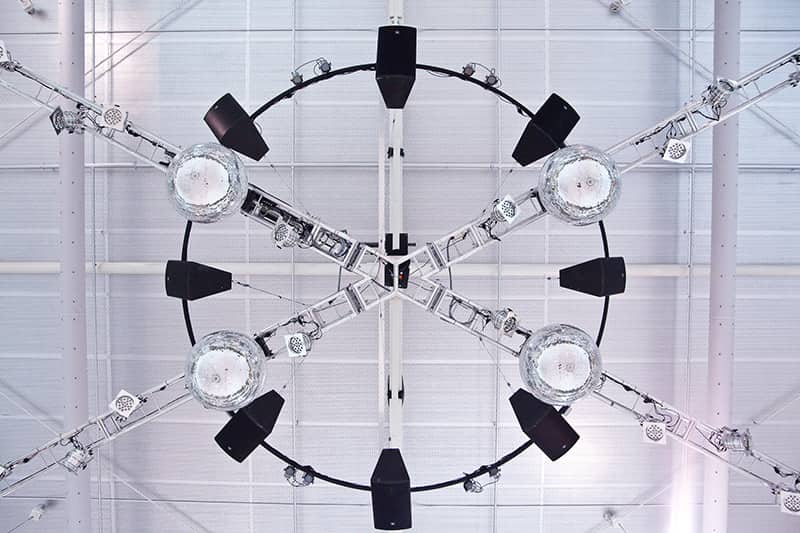

THE X FLIES
The truss rig designed by Lightmoves for the lighting and PA is made up of 36 three metre sections of Browns 300mm box truss. Two straight sections per side complement a large central cross truss to provide coverage of the full length of the rink. A combination of 500kg and 1000kg Swiss-made GIS electric chain hoists enable the trusses to be flown in and out as required.
Tim describes the centre piece of the cross truss system as “an engineering masterpiece”. As a result of the Icehouse’s roof being built as light as possible in order to reduce the amount of steel and overall weight, early testing revealed a high degree of flex in the roof as the truss was being flown out.
“Due to this flexing in the roof, the rigid prototype cross truss joiner cracked during testing so Browns redesigned it with hinged joints so it has plenty of give in it. It’s a really clever piece of rigging,” Tim commented.
The facility boasts a ‘5 Star Green Star’ equivalency rating, based on its design, construction and operation, and uses 40% less energy than typical ice skating rinks. Rainwater collected from the roof and stored in large tanks was used in forming the two rinks and continues to be used for all ice resurfacing requirements as well as toilet flushing and washing facilities.
With the Sochi, Russia winter Olympics less than four years away, it’s entirely possible that Australia’s next skating or ice hockey champions are hard at work right this minute training at the Icehouse. Then again, they may have popped over the road to Costco for a bulk carton of muffins. They really are delicious.
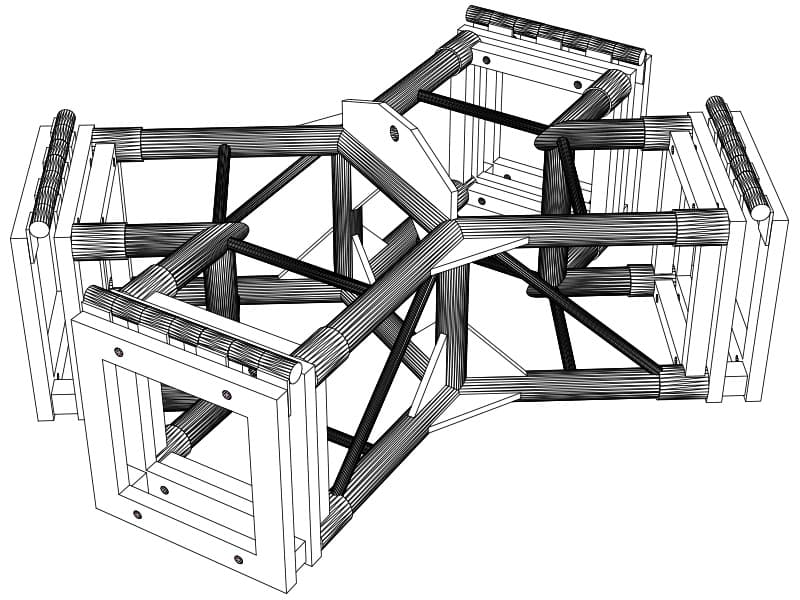
FURTHER INFORMATION
The Icehouse: www.icehouse.com.au
Massteknik (TecViz, Lumidiem, Crestron): www.massteknik.com.au
Lightmoves (Martin, MA Lighting, GIS): www.lightmoves.com
Jands (JBL, Crown, Shure): www.jands.com.au
Show Logic (Medialon): www.showlogic.com.au
Cox Architects: www.cox.com.au
Hansen Yuncken: www.hansenyuncken.com.au
Arup: www.arup.com
Nightlife (Hard Drive Music System): www.nightlife.com.au
Element Labs (Vizomo): www.elementlabs.com

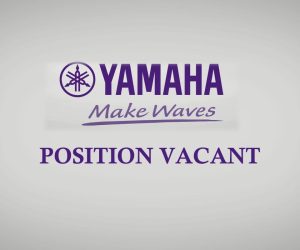






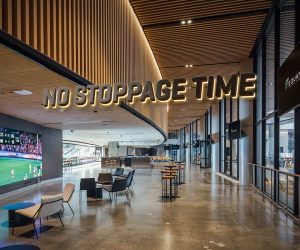



RESPONSES